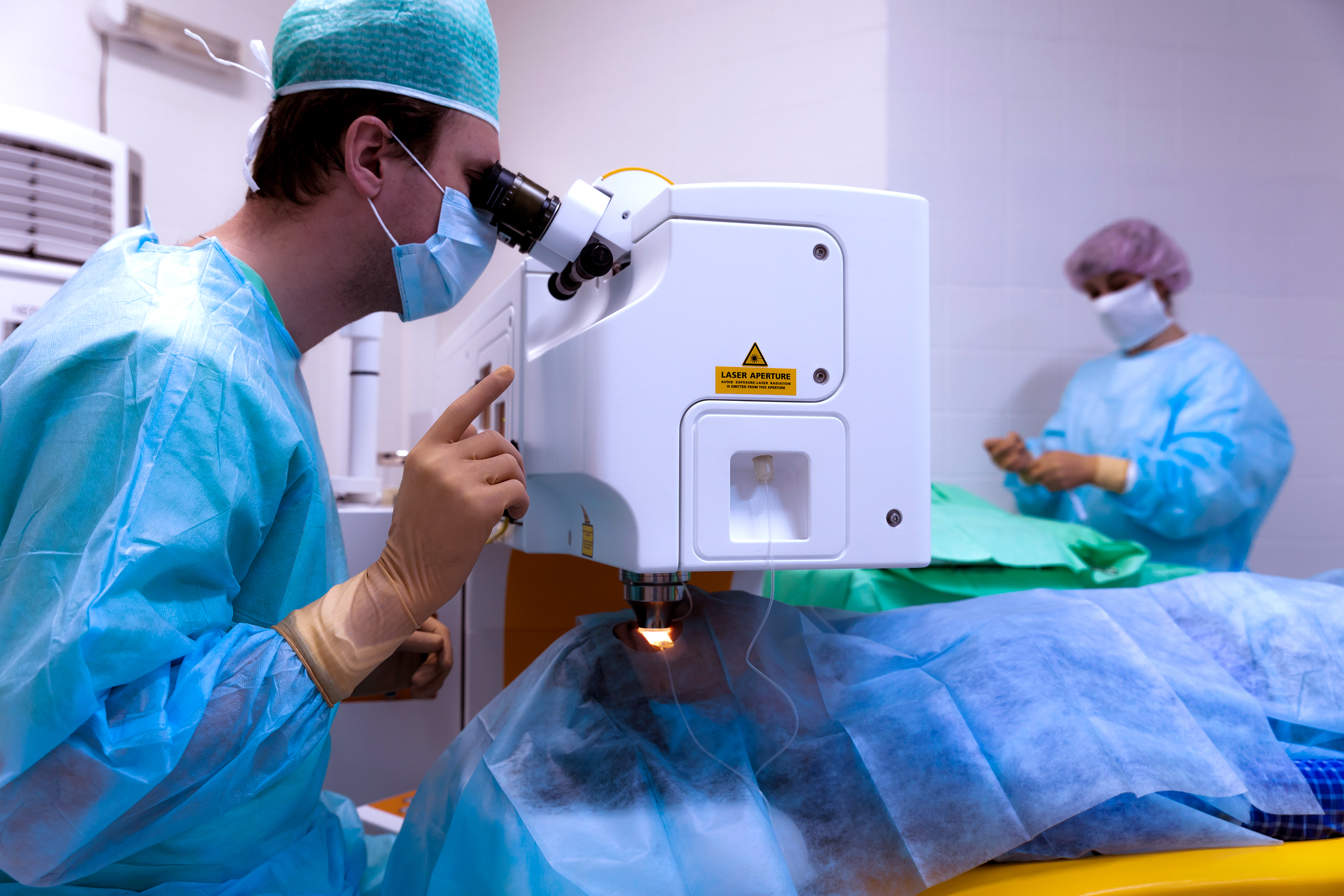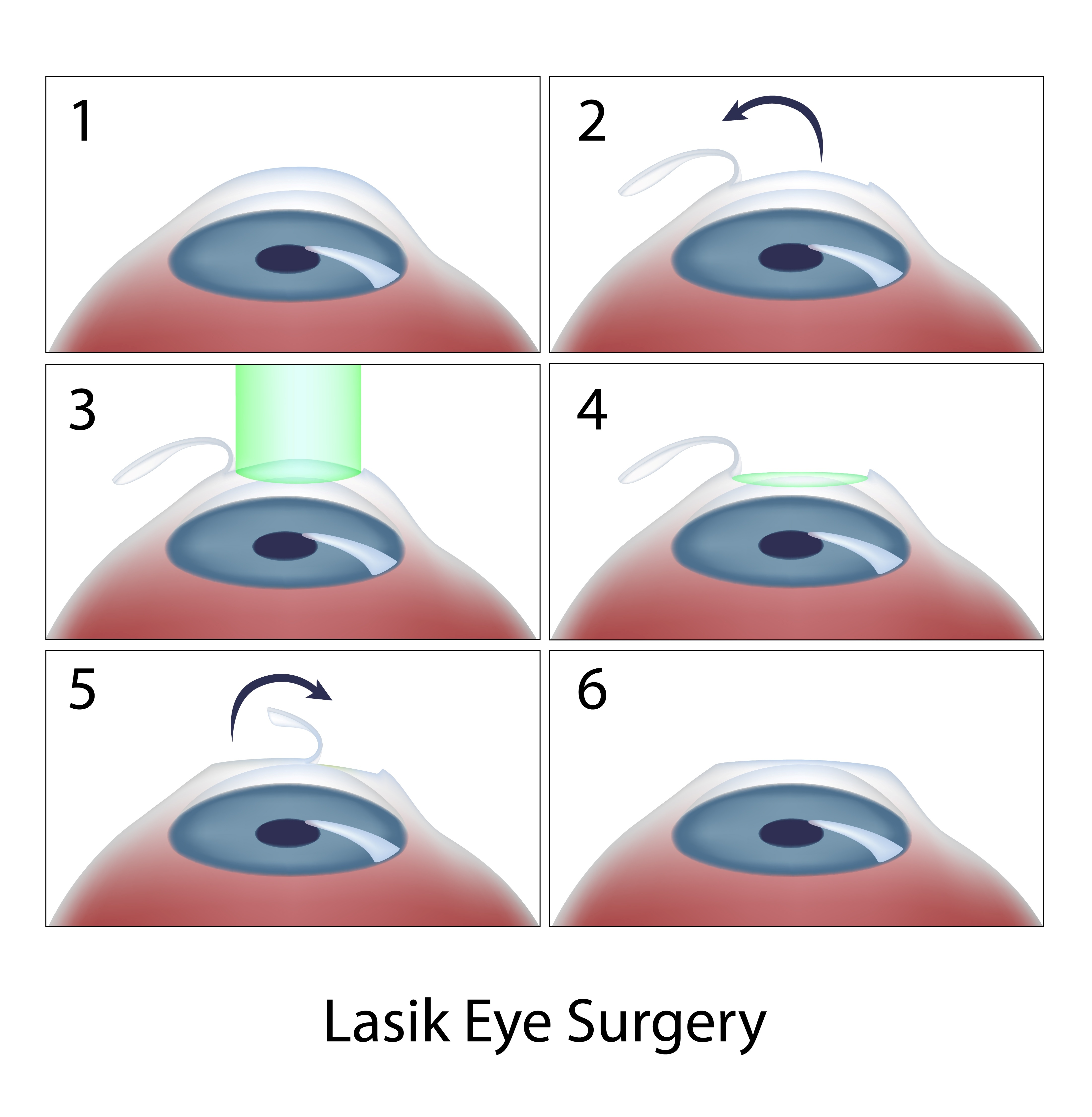Updated on May 3, 2024
Does LASIK Hurt?


Vision Center is funded by our readers. We may earn commissions if you purchase something via one of our links.
Is LASIK Eye Surgery Painful?
The LASIK procedure can cause minor discomfort during and after the procedure. Many people describe feeling a slight pressure sensation but no pain.
Before the surgery, your surgeon will administer local numbing eye drops to numb your eyes. They can also prescribe oral sedatives, which relieve nerve pain, help you sleep, and reduce anxiety, tension, and muscle spasms.

Many people describe feeling a slight pressure sensation during the surgery. But in most cases, you’ll feel no pain throughout the procedure.
Does LASIK Hurt After the Procedure?
Like the procedure, you’ll experience little to no pain after LASIK. However, others report a minor stinging or burning sensation as the anesthetic eye drops wear off.

There may be some mild pain or discomfort as your vision stabilizes and your eyes heal, but it’s usually pain-free.
Post-op effects usually stop by your follow-up appointment (within 48 hours) or a few days after. Contact your eye doctor immediately if you experience pain or discomfort for over a week after surgery.
Risks and Side Effects of LASIK
LASIK is a safe procedure with few side effects. It’s approved by the U.S. Food and Drug Administration (FDA) for people whose vision hasn’t worsened in 1 to 2 years, sometimes more. A licensed eye surgeon must also perform the procedure with an approved laser.
Most people who undergo LASIK experience mild, temporary side effects. As your vision stabilizes, you might experience:
- Blurred vision
- Mild discomfort
- Tearing up
- Light sensitivity
- Halos with night vision
- Dry eyes
These side effects usually clear up within a few days after surgery.
Serious Side Effects of LASIK
Serious risks associated with LASIK include:
- Severe dry eye syndrome, in which your eyes are no longer able to produce sufficient tears
- Touch-up or follow-up procedures for further vision correction
- Vision regression
- Vision loss
Contact your eye doctor immediately if you experience any of these side effects.
What Happens During LASIK Surgery?
LASIK surgery uses a special cutting laser to change the shape of your cornea. The cornea is a dome-shaped clear tissue at the front of the eye that bends or refracts light into the retina.
Light bends incorrectly if you have refractive errors like nearsightedness, farsightedness, or astigmatism. LASIK surgery corrects these vision issues, making contacts and glasses unnecessary.
The surgery consists of these 5 steps:
- First, your eye surgeon will hold your eyelids open with a tool. Then they’ll place numbing drops into your eye(s) so you won’t feel anything.
- The surgeon will use a small blade or special laser to cut a corneal flap in your eye, which can cause minor, temporary discomfort. Many people report feeling pressure during this part of the surgery.
- The excimer laser is used to reshape your cornea. The surgeon will use a computer with a map of your eyes as the guide.
- After the excimer laser finishes, the surgeon smooths the corneal flap back into place.
- The surgeon will repeat this process on the other eye (if you’re receiving LASIK in both eyes). Then the laser eye surgery is complete.

What to Expect During LASIK Surgery
You’ll be awake and alert throughout the surgery. Although this might sound scary, the procedure is safe and very low-risk.
There is no leftover foggy or groggy feeling after the procedure because general anesthesia isn’t used. However, surgeons can offer a mild sedative to help you relax before the surgery.
The entire procedure usually takes less than 30 minutes for both eyes. Approximately 10 minutes is needed to complete the surgery on each eye.
13 LASIK Recovery Tips
Recovering from LASIK surgery is relatively uncomplicated for most people. However, it is a surgical procedure, so most people experience mild side effects for a few days.
The following are helpful post-LASIK tips:
- Avoid rubbing your eyes
- Take any medications as prescribed by your doctor
- Wear the eye shield provided by your doctor
- Avoid wearing contact lenses even if your vision is blurry
- Don’t exercise or engage in any physical activity for a few days
- Avoid using eye makeup and skincare products around the eyes until your doctor says they are safe to use
- Avoid activities that could result in bumping or hitting your eyes for at least a month after the procedure
- Avoid hot tubs or saunas for at least a few weeks
- Wear sunglasses in direct sunlight
- Don’t shower the first day (when you do shower, keep the water, shampoo, and soap out of your eyes)
- Don’t use screens for the first day, and reduce screen time for the first week
- Stay away from dusty or dirty environments
- Attend follow-up appointments
Contact your doctor to schedule an eye exam if you experience severe pain or your vision worsens after the initial recovery.
The healing process can take up to 6 months for your vision to stabilize completely. Proper eye care is important; continue to undergo annual eye exams as normal.
Summary
LASIK can cause minor discomfort during and after the procedure. Many people describe feeling some slight pressure but no pain.
LASIK surgery uses a special cutting laser to change the shape of your cornea to correct refractive errors. Although you’ll be awake for the procedure, you won’t feel anything because of numbing eye drops and sedatives.
After the procedure, you’ll need to attend a follow-up appointment to monitor your recovery. If you experience any pain or discomfort, contact your doctor immediately.
In this article
6 sources cited
Updated on May 3, 2024
Updated on May 3, 2024
About Our Contributors
Kelly Brown, a content writer for Vision Center, is dedicated to sharing vital information to assist individuals in making informed decisions about their vision health. Her writing covers a range of topics, from selecting the best eye doctor to addressing health issues impacting vision, with the aim of educating readers through informative and engaging content.
Dr. Melody Huang is an optometrist and freelance health writer with a passion for educating people about eye health. With her unique blend of clinical expertise and writing skills, Dr. Huang seeks to guide individuals towards healthier and happier lives. Her interests extend to Eastern medicine and integrative healthcare approaches. Outside of work, she enjoys exploring new skincare products, experimenting with food recipes, and spending time with her adopted cats.

